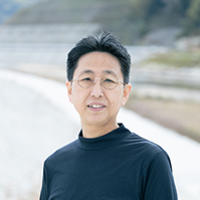
Maki Koyama
Dr. Maki Koyama is an Associate Professor in River Basin Research Center at Gifu University, Japan. Dr. Koyama received B.Eng. and M.Eng. degrees in Computer Science and Systems Engineering from Yamaguchi University (Japan) in 1996 and 1998, respectively. In 2004, Dr. Koyama earned a D.Eng degree in Built Environment, at Tokyo Institute of Technology (Japan). Dr. Koyama's research is focused on mechanism of human casualties and building disaster resilient communities. Since 2015, Dr. Koyama has been involved in supporting many national, local and community's disaster prevention activities, including government business continuity plans and community disaster prevention plans.
Phone: +81 582932441
Address: 1-1 Yanagido, Gifu, Japan
Phone: +81 582932441
Address: 1-1 Yanagido, Gifu, Japan
less
Related Authors
Keisuke Mori
Senshu University
Jun Sakamoto
Hosei University
Tatsuto Aoki
Kanazawa University
InterestsView All (24)







Uploads
Papers by Maki Koyama
<Preconditions>
The respective authors made this guideline in terms of wisdom through their experiences and research findings. Though, it does not represent the policies and principles of the authors’ affiliated institutions.
The phenomenon of the combined disaster among the pandemic crisis (COVID-19) and natural disasters is still under the uncertainty conditions. Since, the main goal of guideline is in order to arrange the topics and get the points straight. Moreover, this guideline updates in accordance with the actual situations.
It is not possible to completely eradicate all risks. This guideline is for the decision makers, including residents who need
to make countermeasures and decisions,
to make borders of risks whether they are acceptable or not,
to consider whether the decision is feasible or not.
The authors expect that the guideline could be useful for them to assist their decisions.
<Issues of the conventional countermeasures against natural disasters during the COVID-19 pandemic>
The social distancing rules to prevent the spread of COVID-19 require people to refrain from gatherings and contact with other people. On the other hand, the conventional response to regional disaster prevention (i.e. support from members of the community in the form of watching out for and having contact with others; the setting up of evacuation sites where the “Three Cs” (Closed spaces, Crowded Places, and Close-contact settings) are the norm; and post-disaster recovery and reconstruction work enlisting assistance from large numbers of supporters) is grounded on the assumption of people congregating and coming into contact with one another. Therefore, countermeasures against natural disasters during the COVID-19 pandemic will require totally different ideas and approaches.
It will take a great deal of time to share and elicit an understanding of these totally different ideas and approaches not only with administrative authorities, support groups and researchers but also among communities. Since, everyone concerned needs to begin thinking about the issues at an early stage (which includes community members themselves).
In the case of COVID-19, it is not possible to reduce the risk of infection to zero, meanwhile there are still uncertainties about this disease.
When it comes to the disaster response amid the COVID-19 pandemic, at present the necessary response frameworks and regulatory mechanisms are not in place (or are still under consideration). For example, in some cases, there are insufficient human and material resources available; clear roles have yet to be allocated to specific organizations, departments or people; and no usable systems are in place. Thus, this must essentially be a process of trial and error, one in which measures are thrashed out and taken on a regional basis in line with each region’s individual set of circumstances.
Depending on the type of natural disaster, what can be done differs according to the disaster situation and time phase. Since, it is difficult to create countermeasures for multiple hazards (this guidelines begins by examining directions for measures targeting landslide disasters caused by flooding and rainfall, for which it is easy to set up a timeline, and then goes on to consider other disasters).
<Objectives>
Based on the above issues, this guideline brings together a pool of information to provide organizations and communities with a set of guidelines for creating countermeasures.
It presents a scenario about what is likely to happen in the event that a natural disaster occurs during the COVID-19 pandemic (i.e. makes it easier for people to imagine what will occur), and possible directions for measures in such an eventuality (in other words, guidelines on how to make the best approach).
The guideline intends to provide a selection of possible measures and approaches in anticipation of such an event, rather than specific know-how from on the ground.
<Concerned actors, disaster and the phase of disaster process of this guideline>
Intended readership: Households, communities, support groups (local), nursing care and welfare service providers, social welfare councils, medical institutions, other businesses, administrative authorities, support groups (external)
Covered time phases: Preparedness phase before disaster, immediate aftermath of disaster, period in which victims are forced to evacuate and shelter from the impacts of the disaster, (Period in which victims work to rebuild their lives: covered in part)
Applicable disasters: Landslide disasters caused by flooding and rainfall (in the future, earthquakes and tsunamis could also be included)